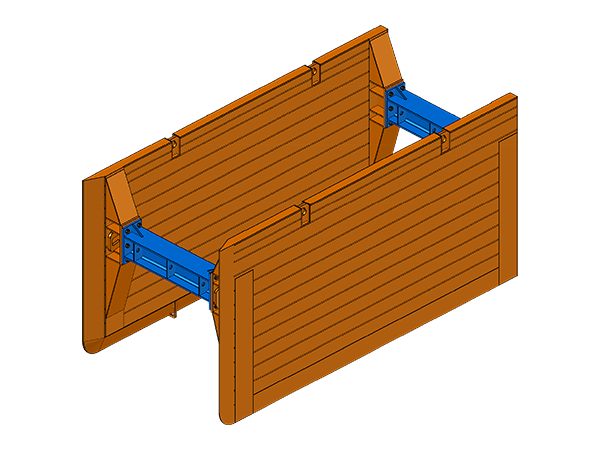Drag Boxes can be used efficiently in non-urban environments where the ground is self-supporting and the site is outside the sphere of influence of buildings and structures.
The Drag Boxes are designed to be pulled along as the excavation progresses. Only a small range inside the box secures the pipe laying operation, therefore, in order to ensure the safety of the workers during the pipe laying process, the soil at the front of the Drag Box needs to be sloped.
After the pipe laying procedure the box has to be pulled forward into the next position. Backfilling and compaction is conducted behind the Drag Box.
Two types of bracings have been proven successful in practice. Either one robust H-Beam, (flange 500) on each side, or two lighter H-Beams, (flange 700) over one another, also on each side. Minimum trench width is 0.81 up to 4.81 m.
There are various models available up to a length of 6.24 m. Plate height can be either 2.5 m or 3.0 m with a maximum pipe clearance of 1.8 m.
A heavy hydraulic excavator is required to pull the box along the excavation. Necessary pulling lugs are welded on the front of the Drag Box.
